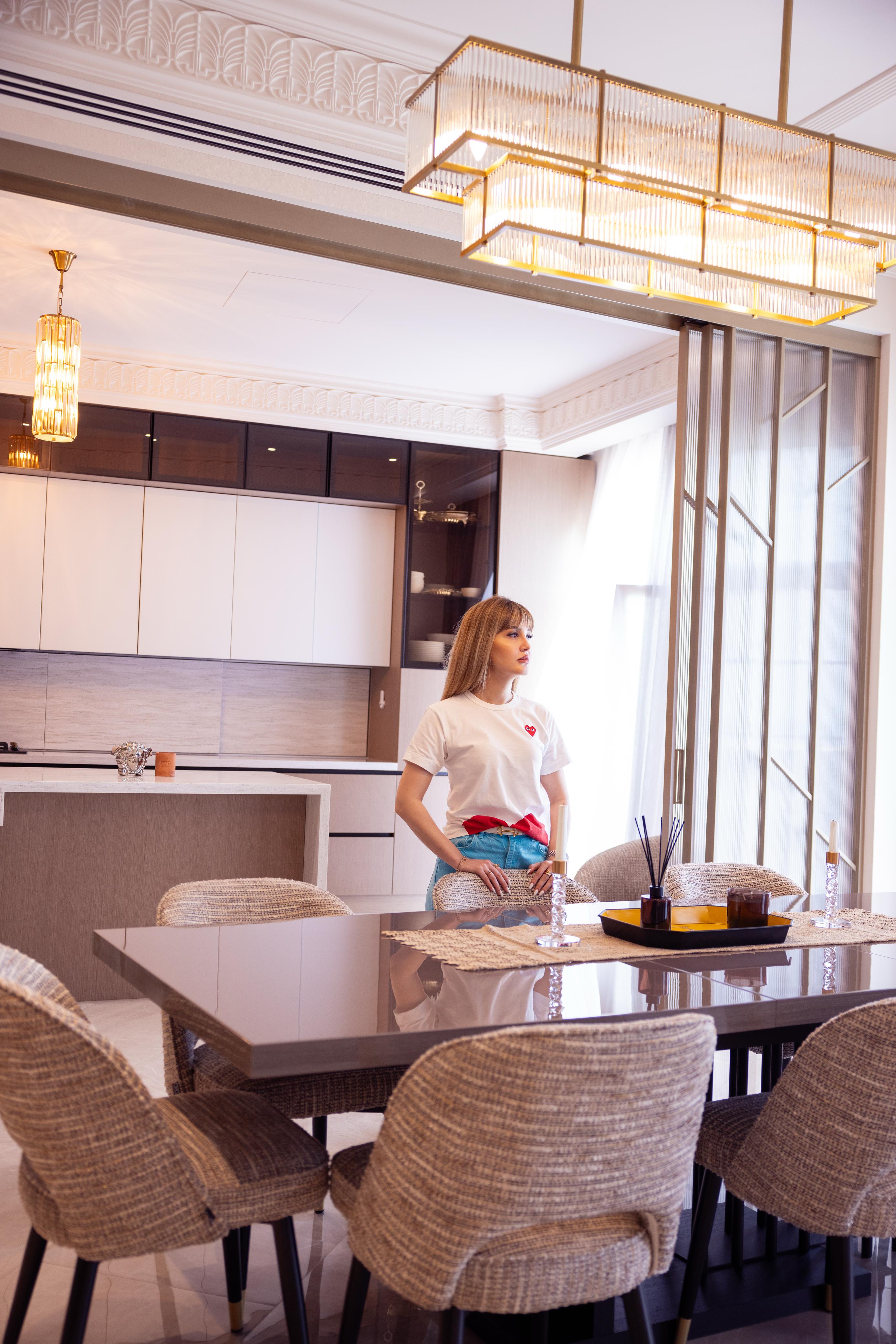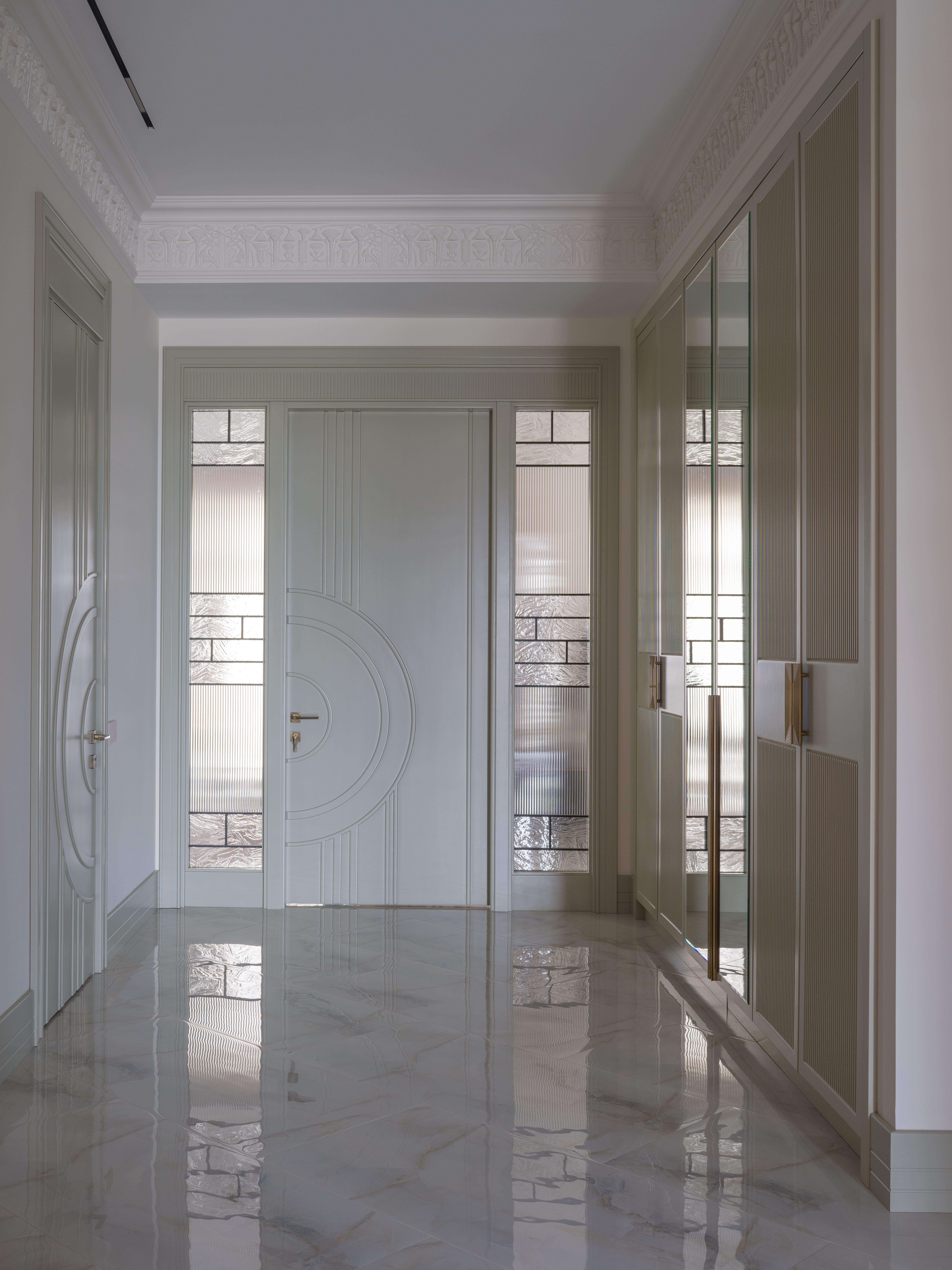1) How did your interest in architecture and design begin? What first inspired you to pursue this field?
My interest in architecture comes from my family. My grandfather was a civil engineer and often worked on projects at home. Watching his drawings and listening to his explanations was very fascinating for me. Even during our walks, he explained structural details—why this column is here, what purpose this shape serves. These early observations and conversations formed my love for architecture.
2) What are the main characteristics that define Aysel Mahmudlu’s design style?
I am far from minimalism. My goal in design is aesthetic richness, elegance, and visual impact. I always focus on quality and uniqueness when choosing furniture, textures, and decorative elements. Every detail is either genuinely high-end or presented in a way that evokes grace and subtlety. The handcrafted pieces and specially designed elements seen in the White Wind and Portobella restaurants are a clear showcase of this style.

3) When was the “Heydar Mosque” project completed, and what is its architectural significance?
The inauguration of the Heydar Mosque took place on June 15, 2022 — National Salvation Day. This project holds special significance for me. Considered the largest mosque in the Caucasus and bearing the name of the National Leader Heydar Aliyev, it has also left a profound impact on my architectural career. Carrying out this project was both a great responsibility and a source of pride. It remains, for me, an unforgettable and timeless achievement.
4) What creative freedoms and challenges come with working in luxury interior design?
Luxury interior design offers extensive possibilities and creative freedom, but the biggest challenge is exceeding expectations. If the client trusts you and gives full freedom, the aim is not just to complete the work but to astonish and deliver a result far beyond what was expected. This challenge is both a responsibility and an inspiring test for any creator.
5) What key factors make a project successful? How do you approach a project at the start?
Whether it’s a residential space or a commercial one, at Azul Bureau we approach each project individually. Initially, understanding the client’s needs and taste in depth is essential. Then, by combining functionality and aesthetics, we create spaces that are both practical and visually impactful. When a person believes in what they see, they recommend it to others. That’s why each project for us is not just work, but a gateway to more success and future projects.

6) How do you balance client requests with your own creative vision?
This balance is based on mutual trust and professionalism. I carefully listen to the client’s desires, but my goal is to present them with an elevated, enhanced version of that vision. Together with my team, we add a creative perspective and technical precision to perfect each project. The client may sense what they want but not articulate it fully—we interpret and shape their desires into a result that exceeds expectations.
7) Do you believe that the spaces you design affect people’s emotional states and everyday life?
Yes, the design of a space has a significant impact on human psychology. Design is not just visual but also experiential. Restaurants should encourage engagement, not drowsiness. In spa centers, the goal is to maintain balance without causing fatigue. We also tune elements like lighting, music, and color palette to subtly affect people’s mood. The power of design lies in the harmony of all these elements.
8) What do you foresee about the impact of technology on architecture and interior design in the future?
Technology makes design more functional and interactive, but creative value must always come first. I enjoy the harmony between classicism and modern elements. My taste is already formed, and I wouldn’t change it, but I welcome intelligent technologies that enhance functionality.

9) If you had unlimited budget and total creative freedom, what “dream project” would you like to implement?
My dream is to create a center of development and support for talented but underprivileged women and children. This place would offer real opportunities for learning, development, and finding one’s path. Women professionals—designers, musicians, lawyers, entrepreneurs—would act not as teachers, but as mentors. I also envision it as a club where professional women gather to support one another, collaborate, and share experiences and projects. Such a space could become a source of empowerment and inspiration socially and professionally.
10) What new projects can we expect from Aysel Mahmudlu in the future?
Currently, I am working on restaurants, hotels, villas, and public spaces. My future plan is to continue in the same direction, but with different approaches and fresh ideas. With every project, I aim to combine form, function, and emotion to create new sensations and perspectives. For me, design is a language that is constantly evolving, and I strive to express it more powerfully each time.

